Coffee roasting-- the secret to the aroma of coffee beans

Professional coffee knowledge exchange more coffee bean information please follow the coffee workshop (Wechat official account cafe_style)
Pressurizing before exploding is the secret to the aroma of coffee beans.
What you should know.
There are many steps in the coffee roasting process. This article will focus on the commercial roaster to observe the roasting stage, and the roasting process also determines the taste of the coffee because of the active chemical reactions inside the beans.
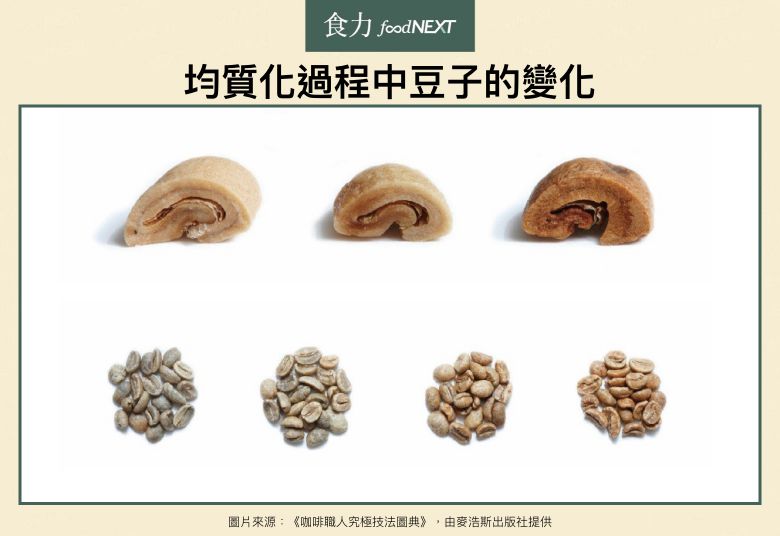
Homogenization
─ transfers heat to the inside and outside of the raw beans, preparing all the beans for a uniform reaction.
Each raw bean is formed by countless cells, including the cell wall, the cell membrane, the sap that fills its interior, and the nucleus. The harvested raw beans will be dried in order to preserve and circulate, and in the drying process, part of the water in the cell sap and cell wall will evaporate, leaving only about 10% to 14% of the water. Because of the decrease in water, the size of the cells will naturally become smaller, and the raw beans will become smaller. However, the organic acids and sugars present in the cells still remain.
When the dried raw beans are heated, the heat will be transferred to the raw beans and change. First of all, the water left inside the raw beans will turn into water vapor when heated, and the volume will increase a lot when the water turns into water vapor (about 1700 times the volume), so the internal pressure of the heated beans will also increase.
The increase in pressure will also cause the boiling point of water to rise, making the water vapor overheated. In the case of a pressure cooker, for example, it may be easier to understand the principle of rising boiling point: in a high mountain, the boiling point becomes lower because the pressure becomes lower, and the cooking is undercooked. At this time, as long as you put a stone on the pot, the boiling point will be forced to rise because of the internal pressure. The pressure cooker is designed based on this principle. In a pressure cooker with 1bar pressure, the temperature of water vapor will reach about 125 °C, and the same phenomenon will occur inside the cells of beans.
Because the pressure is higher, the volume of cells that have shrunk because of dryness becomes larger. Coffee beans are made from coffee cherries, whose cellular tissue is the same as that of trees / plants, so when the size is enlarged to a certain extent, at some point, the tissue will explode because it can't stand the pressure. At this point, some of the high-pressure water vapor formed inside the cell will be discharged, while the other part will be transferred to other cells. Through this process, water vapor with the same temperature and pressure will be evenly distributed to the whole cell, and this phenomenon will occur almost all at the same time in the whole pile of raw beans.
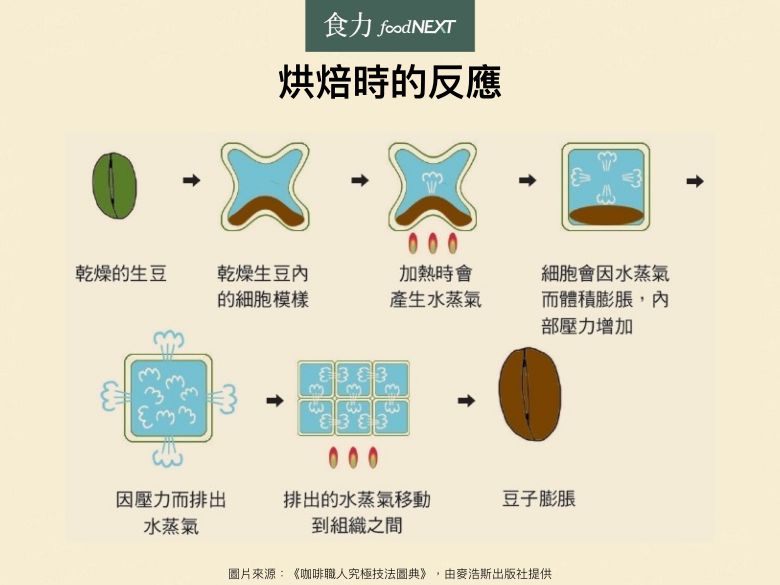
Generally speaking, raw beans are mixed with both large and small beans, and there are thick and thin parts on each bean, as well as drier surfaces and relatively moisture-rich internal tissues. If these complicated factors are not taken into account, no matter whether they are heated three or seven or twenty-one, then the small beans will be the first to scorch off, and then the large beans will be unripe, or only scorched on the surface, but still half-ripe on the inside. therefore, the beans as a whole must be prepared for a uniform reaction.
Inside the beans, the water moves to prepare the whole tissue for uniform reaction, while on the outside, through the heat conduction between beans and beans, and the convective heat that rotates together, all beans are ready for uniform reaction. This stage of preparation for a uniform reaction of beans as a whole is called "homogenization".
In homogenization, the beans turn brown and look like dried things, which we used to call the "dehydration stage," but the water evaporated during this process is only a negligible change compared with the first explosion when the tissue itself changes, so the word "dehydration stage" is not the correct description.
First explosion (first crack)
The ─ tissue expands and breaks, and the aroma produced by baking increases.
When the homogenization stage is over, it means that the beans are ready for the same reaction at the same time. Compared with the state of raw beans, the volume of each cell increases a lot, and the tissue as a whole becomes thicker. If you continue to heat, the volume will continue to increase, and then, as in the next picture, the central line of the bean will crack. In the state of raw beans, the central line bites with each other, but as the size increases, the ends on both sides of the beans will crack, making a sound like a broken branch. At the first explosion, the bean will crack like this, and at this time it will begin to drain a large amount of water from the inside of the bean.
The process so far is called the cinnamon-high-city baking phase. The beginning stage of the first explosion is called Cinnamon, the stage when the first explosion is about to end is called High, and the stage from the end of the first explosion to the second explosion is called City.
Rest period
─ produces active chemical reactions inside the beans, which determines the taste of the coffee.
The period from the end of the first explosion to the beginning of the second explosion is called a "rest period".
As the water is drained, the pressure on the tissue inside the bean decreases, and the tissue temporarily stops growing. Because the beans are in a state where a lot of water has been discharged at this time, if they are reheated at this time, water vapor will not take away the heat, and the internal heat will rise even faster than before.
At this time, a more active chemical reaction can be produced by the high temperature, the gas will be produced and the tissue will continue to expand, and the internal tissue that cracks during the first explosion will become more expanded and filled. From the outside, the wrinkles on the surface of the beans will gradually disappear, and the beans will become bigger.
At this time, the high temperature has been conveyed to the beans, so the chemical reaction within the beans has reached the most exciting part. The increase in aroma produced by baking is an important period for determining the taste of beans. The beans before the rest period are in the "endothermic period," while at the beginning of the rest period, the beans will enter the "heat period." but in fact, the beans do not emit heat, just because, compared with the previous stage, the temperature rises rapidly during heating. so it's called it for convenience. If the beans react too quickly, they may burn or produce an unwanted bad smell, so firepower is usually reduced at this stage.
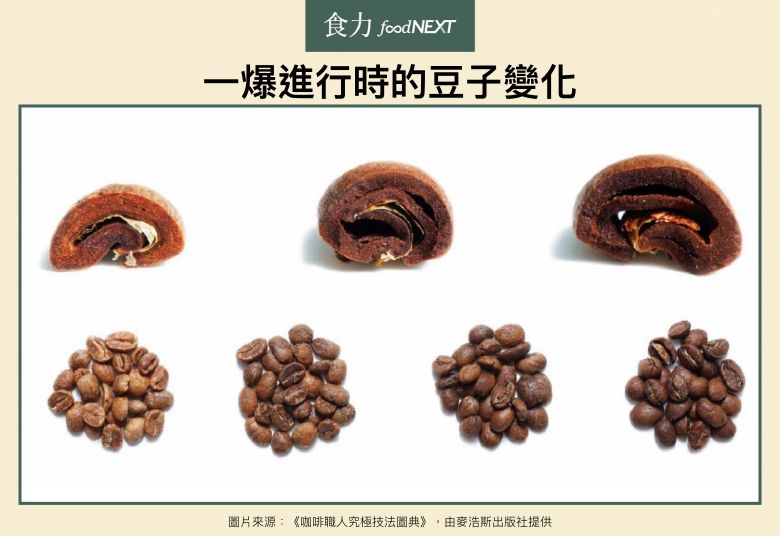
Second explosion (second crack)
The ─ tissue splits again, producing a strong chemical reaction, and the aroma and sour taste of the coffee are enhanced.
After the rest period, after the internal tissue changes and fully expands, the cracked internal tissue will be filled and the beans will continue to grow. At this time, you will hear the sound of organizational change again, which is called the second explosion. It makes a sound like breaking a matchstick, which is clearer and louder than the first explosion.
At this time, the pressure in the tissue reaches the highest point, and the gases produced inside the beans will begin to be released to the outside. During this period, the capillaries formed in the process of releasing these gases are more related to the future extraction of coffee. In other words, only the first burst of coffee beans have relatively few capillaries, so the extraction will be less smooth.
From the time of the second explosion, the temperature of the beans will rise more violently, so there will be stronger internal chemical reactions, making the aroma of coffee stronger. At the same time, the aroma substances produced by baking will also show a strong bitter taste.
If the second explosion is used as the basis, the baking degree is called City before the second explosion and Full city after the second explosion. Coffee that continues to be baked after the Full city stage is habitually called:
Viennese baking: the second explosion intensive period (also known as espresso baking).
(French): the period during which the grease fully oozes out of the surface after the second explosion.
(Italy): the period when the color becomes darker and the oil begins to zoom slowly after the second explosion.
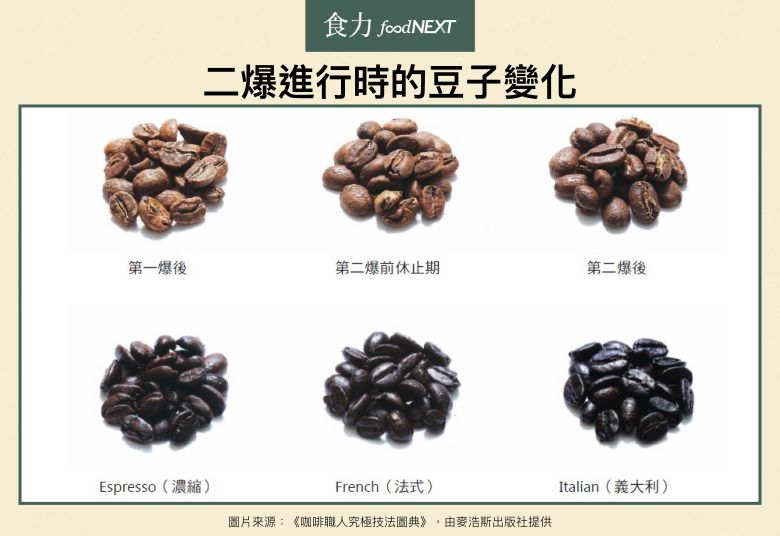
Baking refers to the process of heating raw beans, which are similar in composition to trees, so if the burning point of wood exceeds 250 °C, the beans will be charred. So re-baking means that before the temperature of the bean reaches 250 °C, if the final baked thing is not reddish brown, but completely black, then the bean becomes charcoal.
Professional coffee knowledge exchange more coffee bean information please follow the coffee workshop (Wechat official account cafe_style)
Important Notice :
前街咖啡 FrontStreet Coffee has moved to new addredd:
FrontStreet Coffee Address: 315,Donghua East Road,GuangZhou
Tel:020 38364473
- Prev

Coffee roasting-- five coffee roasting techniques
Professional coffee knowledge exchange more coffee bean information Please follow the coffee workshop (Wechat official account cafe_style) today to talk about five coffee roasting techniques, including dehydration, climbing temperature, smoke exhaust, taxiing and cooling. 1. Dehydration is often the first step in the roasting of coffee. Coffee beans have a certain degree of water content, plus
- Next
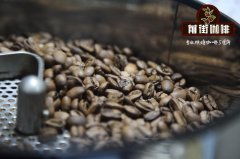
Coffee roasting-caramelization and Mena reaction
Professional Coffee knowledge Exchange more information on coffee beans Please follow the Coffee Workshop (Wechat official account cafe_style) A few days before Napoleon died on St. Helena Island in 1821, his attendant Marshal Bertrand wrote about Napoleon begging: "he has asked for twenty times in the morning and asked me if I could give him some more coffee. "No, master, the doctor ordered only one drink.
Related
- Beginners will see the "Coffee pull flower" guide!
- What is the difference between ice blog purified milk and ordinary milk coffee?
- Why is the Philippines the largest producer of crops in Liberia?
- For coffee extraction, should the fine powder be retained?
- How does extracted espresso fill pressed powder? How much strength does it take to press the powder?
- How to make jasmine cold extract coffee? Is the jasmine + latte good?
- Will this little toy really make the coffee taste better? How does Lily Drip affect coffee extraction?
- Will the action of slapping the filter cup also affect coffee extraction?
- What's the difference between powder-to-water ratio and powder-to-liquid ratio?
- What is the Ethiopian local species? What does it have to do with Heirloom native species?

